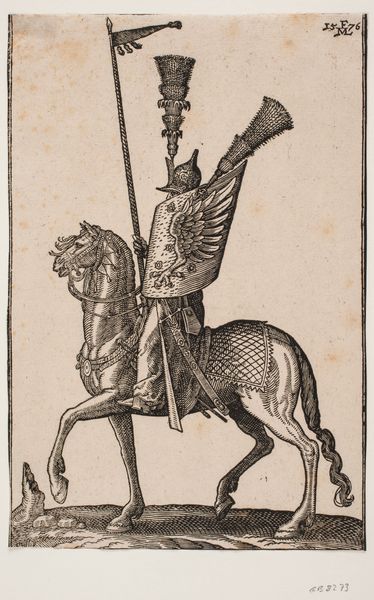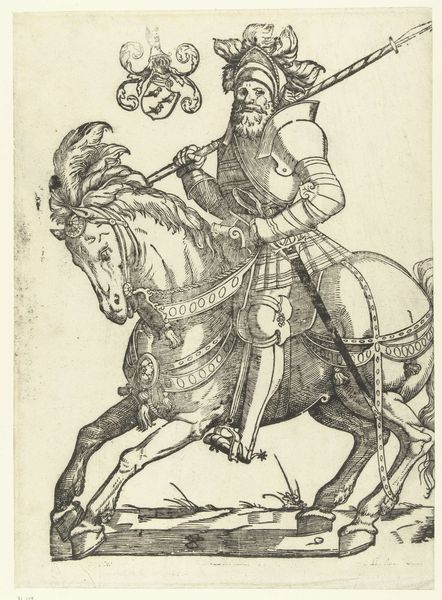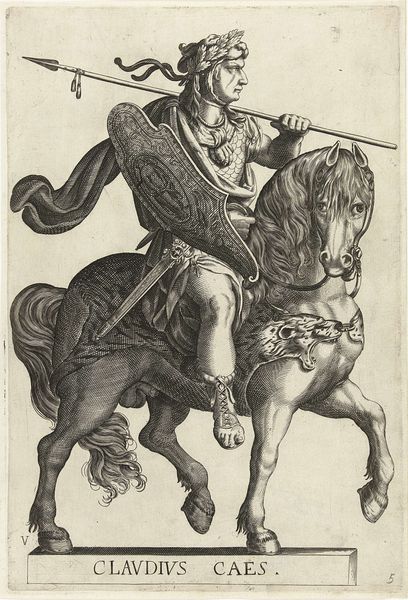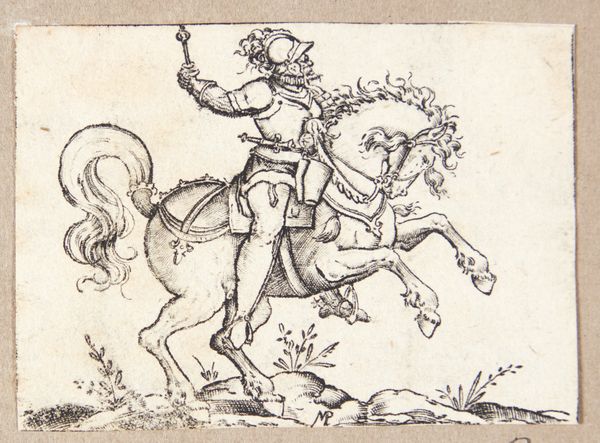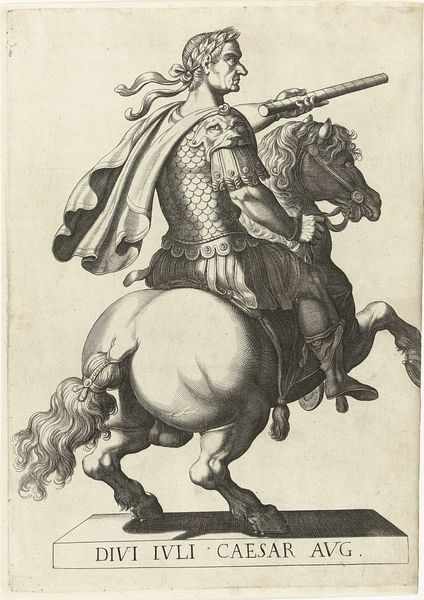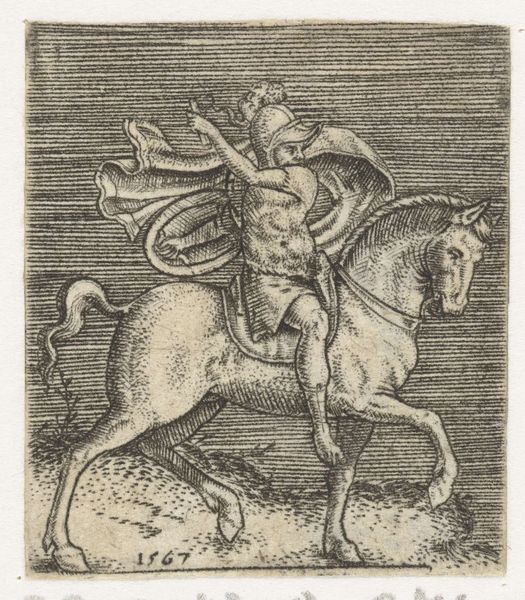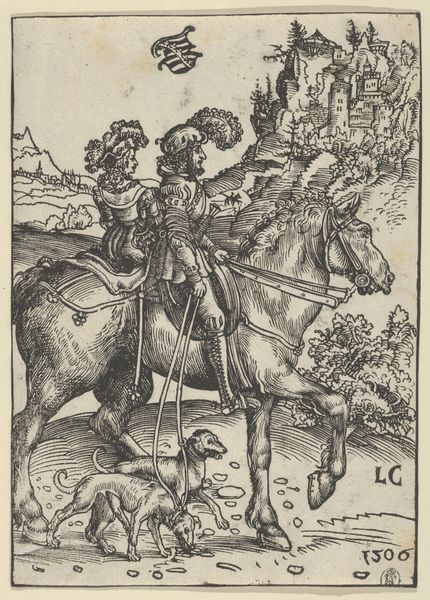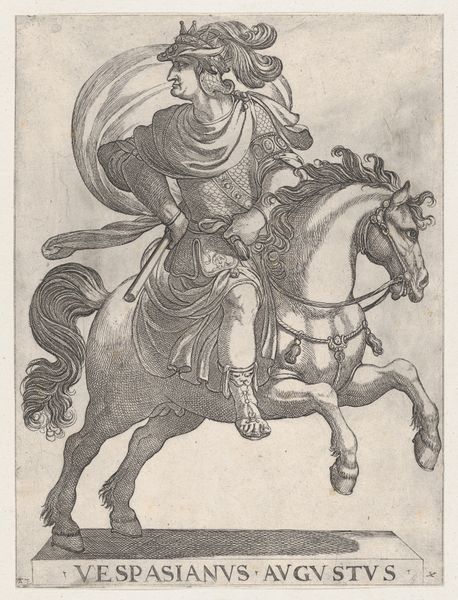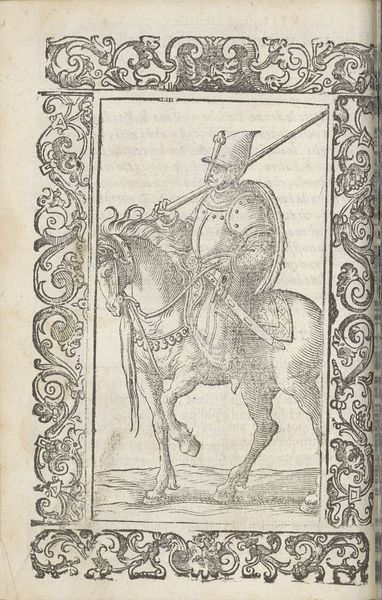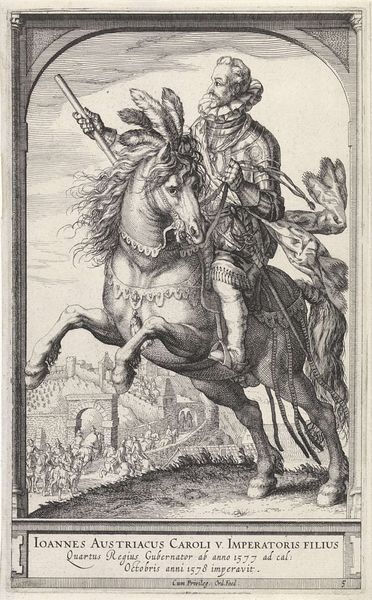
print, woodcut, engraving
# print
#
landscape
#
figuration
#
woodcut
#
northern-renaissance
#
engraving
Copyright: National Gallery of Art: CC0 1.0
Hans Springinklee created this woodcut of ‘A Turkish Horseman’ around 1520 in Nuremberg, Germany. It depicts a soldier on horseback carrying a flag bearing the Ottoman Empire's star and crescent. The print reflects a period of great political tension in Europe. Martin Luther's Reformation had recently begun, causing a schism within the Catholic Church and the Ottoman Empire was expanding its reach into Europe. Springinklee and other German artists produced many images of Turkish soldiers during this period. It’s likely that the print served a propagandistic function. Although the horseman is a fearsome warrior, the rough, inexpensive printing technique would have made it available to a wide public audience. It may have been intended to both frighten and rally popular support against the 'Turkish threat'. We can deepen our understanding of this artwork by examining its political and religious context. Art historical research relies on understanding the social conditions that shape an artist’s choices.
Comments
No comments
Be the first to comment and join the conversation on the ultimate creative platform.
